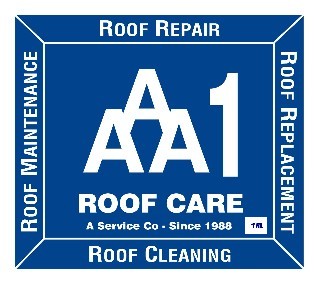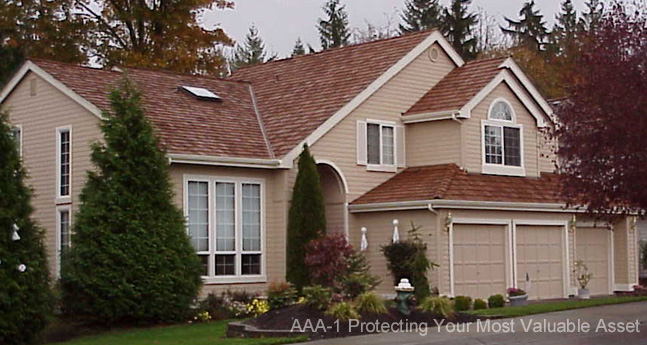 | Sun
 | Heat and
ultraviolet rays cause roofing materials to deteriorate over time.
|
|
 | Rain
 |
When water gets underneath the shingles,
shakes or other roofing materials, it can work its way to the deck and cause
the roof structure to rot. And, the extra moisture encourages mildew and rot
elsewhere in the house, including damaged walls, ceilings, insulation and
even the electrical system. |
|
 | Wind
 |
High winds can lift the edges of shingles
(or other roofing materials) and force water-and debris underneath them.
Very high winds can do extensive damage. |
|
 | Snow and Ice
 |
Melting snow often refreezes at the
roof’s overhang (where the surface is cooler), forming an ice dam and
blocking proper drainage into the gutter. Instead, the water backs up under
the shingles and seeps into the interior. In the early melt stages, gutters
and downspouts can be the first to fill with ice and be damaged beyond
repair or torn off the house. |
|
 | Moss and Algae
 |
Moss can grow on wood shingles and shakes
if they are kept moist by poor sunlight conditions or bad drainage. Once it
grows, moss holds even more moisture to the roof surface, causing rot, and
its roots actually work their way into the wood. Algae also grows in damp,
shaded areas on asphalt shingle roofs. Besides creating an ugly black-green
stain, it can retain moisture, causing rot and deterioration. Trees and
bushes should be trimmed away from the house to eliminate damp, shaded
areas, and gutters should be kept clean to ensure good drainage.
|
|
 |
Tree and Leaves
 |
Tree branches touching the roof will
scratch and gouge the roof material as they are blown back and forth by the
wind. Falling branches from overhanging trees can damage-or even
puncture-shingles and other roof materials. Leaves on the roof surface
retain moisture and cause rot, and leaves in the gutters block drainage.
|
|
 |
Missing or torn
Shingles
 |
The key to a roof’s effectiveness is
complete protection. When shingles are missing or torn off, the roof
structure and the interior of the home are vulnerable to water damage and
rot. And, the problem is likely to spread-nearby shingles are easily ripped
or blown away. Missing or torn shingles should be replaced as soon as
possible. |
|
 |
Shingles
Deterioration
 |
When shingles get old and worn out, they
curl, split and lose their waterproofing effectiveness. And, weakened
shingles are easily blown off, torn or lifted by wind gusts. The end result
is structural rot and interior damage. A deteriorated roof only gets worse
with time and it should be replaced as soon as possible. |
|
 |
Flashing
Deterioration
 |
Many apparent roof leaks are really
flashing leaks. Without good, tight flashings around chimneys, vents,
skylights and wall/roof junctions, water can sneak into the insulation and
cause damage to walls, ceilings, insulation and even the electrical system.
|
|
 |
Condensation
 |
Condensation can result from the build-up
of relatively warm moisture-laden air. Moisture in a poorly ventilated attic
promotes decay of the wood decking and rafters, possibly destroying the roof
structure. The solution may be to increase attic ventilation through the use
of larger or additional vents, so that the attic air temperature will be
closer to the outside air temperature. |
|
 |
The importance of
ventilation
 |
When a house has been properly
ventilated, a positive airflow is created which allows the house to breathe
and helps prevent moisture build-up. That's why proper attic ventilation is
a serious issue that should always be considered when re-roofing your home.
|
 |
Excess moisture in the home causes mildew
and drywall damage. Moisture problems can cause paint to peel and siding to
warp. |
 |
Balanced airflow keeps attic temperatures
from reaching extremes. Vents allow outside air to move through the attic.
The result is a cooler, drier attic, which means a longer lasting roof.
|
 |
What's the solution
to gain proper ventilation? |
 |
Ridge vents, when used with proper
under eave vents, are the most efficient form of roof ventilation because
they allow uniform escape of warm, moist air from attic space. |
|

 Since 1988
Since 1988